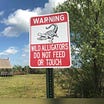The U.S. insurance industry has recently received a lot of negative press. In hurricane-vulnerable Florida and Louisiana, property insurance prices are skyrocketing: Floridians now pay an average of USD$6,000 a year for property insurance, compared to a national average of $1,700. Meanwhile, 10 states and dozens of municipalities have filed a lawsuit over the rising costs of flood insurance. Two major U.S. insurers, State Farm and Allstate, recently announced that they will no longer sell new property insurance policies in California, citing wildfire risk as a primary reason. They join several others in backing away from providing property insurance in some climate-vulnerable areas.
There’s a lot of anger over the rising costs and the increasing difficulty of purchasing property insurance. This is especially true for flood insurance, which in many flood-vulnerable parts of the U.S. is a prerequisite for getting a mortgage – i.e., the thing that most people need in order to buy a house.
Meanwhile, I have been reading a collection of short stories featuring unlikable protagonists. Tra-la-la, I can’t hear you dissing my favorite industry!
Read more: Insurance 101: Why We Care
In all seriousness, it’s understandable that people are angry. Paying thousands of dollars more for an intangible thing you’re required to have, but won’t necessarily ever use, is annoying at best, and can cause serious hardship for households and businesses that are already strapped for cash. On a moral level, while it’s good that the insurance industry is starting to adapt its business strategy to climate change, it seems unfair that such efforts inflict suffering and loss on people who just want to own a place to live or work.
In this edition of Edifice, I’m going to briefly describe the mechanics of what’s happening with climate, insurance and property markets, and then look at solutions. Today’s Edifice content is relevant globally, but I have focused on the U.S. in light of the highly publicized insurer withdrawals I mentioned earlier.
A retreat from climate risk
Insurers’ decisions to withdraw from climate-vulnerable areas are influenced by multiple factors. The main one is that the risks of continuing to insure homes and other properties in climate- and disaster-vulnerable areas have increased, and the growing possibility for disaster outweighs the potential financial returns.
For property insurers to make a profit, they need to earn more than they pay out after disasters. They pull out of places where they lose, or expect to lose, more money than they can make – so it’s probably not a coincidence that, for example, State Farm and Allstate withdrew from California’s property insurance market after posting losses to the tune of billions.
Insurers’ decision to leave has significant consequences for other stakeholders. In particular, when insurers decide a geography is getting too risky to insure, insurance may become unaffordable or unavailable for hundreds of thousands of homeowners. State and federal governments (and by extension, taxpayers) have little choice but to further subsidize wildfire, windstorm (hurricane), and flood insurance, and they find themselves having to pay to rebuild homes and businesses after disasters. Property values can plummet, development may slow, and industry may also pull out.
What’s needed is to make risky situations (e.g., providing insurance in climate-vulnerable geographies) less risky and more profitable, so that insurers will stick around. The good news is, it’s not an impossible mission. In fact, it’s one that plays to the insurance industry’s existing business model.
Risk is opportunity
The way insurers make money is by taking on risk. You pay an insurance company for protection against a specific risk (e.g., a house fire, a car accident, etc.), and unless that risk actually comes to pass, they keep the money – usually, they invest it. This system creates financial returns for the insurance industry, and a financial safety net for people and organizations that buy insurance policies.
The challenge with climate change is, how can insurers provide that safety net at an affordable price – while still making a profit?
There are multiple PhD dissertations to be written on how to make climate-related risk-taking profitable for insurers (for better and for worse!). One option is government intervention. Federal insurance programs such as the U.S. National Flood Insurance Program (NFIP), as well as state-level programs for hazards including earthquakes and wind damage from hurricanes, can provide access to insurance in places where private insurers have withdrawn. They also can provide a “backstop” for insurers by promising to provide funding for payouts if losses get too large. However, a main consideration about these programs is where the government gets the money to do all this. Often, it’s from taxpayers.
Beyond government intervention, there’s a growing subfield of insurance known as alternative risk transfer (ART), which is basically a catch-all term used to describe most kinds of insurance innovation. Like “conventional” insurance, a tenet of ART is risk pooling – the idea that if everyone contributes a little toward the costs of insurance, everyone also can gain access to reasonably priced insurance protection.
However, unlike conventional insurance, many ART solutions specifically target lower-income communities or developing countries, and may involve donor organizations that provide some amount of funding to help cover the costs of buying insurance. Also, many ART solutions can deliver payouts faster because they don’t necessarily rely on someone coming out to inspect damage. Instead, they pay out automatically when an event surpasses a certain threshold (e.g., they might pay out after a hurricane makes landfall in a certain area with a specific wind speed).
Some kinds of ART enable investors to play an active role in insurance solutions and make a profit if no disaster takes place. However, ART has challenges, too. To name a few: these kinds of solutions are not currently mainstream, they may require third-party funding, and compared with “conventional” insurance, they are not consistently as profitable for insurers. (I will write more about all of this in a future newsletter; in the meantime, follow this link to read more.)
Finally, an essential piece of the how-to-make-climate-risk-profitable equation are models, tools and datasets that provide more granular detail about climate risk and properties’ specific characteristics. These can make it possible for insurers to better assess risks and charge appropriate prices – including discounts for homes and businesses whose owners have taken steps to protect them from climate-related disasters. The key here is improving existing models and datasets, and developing new ones, to more accurately account for climate change and any improvements owners make to build their properties’ resilience.
Hoping for heroism
Earlier on, I said I had been reading about unlikable protagonists. If you’ve made it this far, surprise, you’ve been reading about one, too!
In my mind, the insurance industry currently qualifies as an unlikable protagonist: a character that’s playing a key role in the story of humanity’s response to climate risk, but in a way that lately has had negative effects for many U.S. home- and business-owners. The thing about unlikable protagonists is, although they take actions that are unlikable – e.g., they charge more for property insurance or stop offering it in climate-vulnerable areas – they also have the opportunity to be heroes.
However, heroism requires self-awareness, the courage to try new solutions, and above all, a commitment to looking out for others’ interests in addition to your own.
The evidence suggests the insurance has an opportunity to move from unlikable protagonist to climate hero. The question is, will it rise to the challenge?
Kate Stein facilitates climate collaboration and ‘translates’ climate science and insurance for diverse audiences in the public and private sectors. She is based in London and works for WTW; she began her career as a climate journalist in Miami. This newsletter reflects Kate’s views only and are independent from those of her employer.





